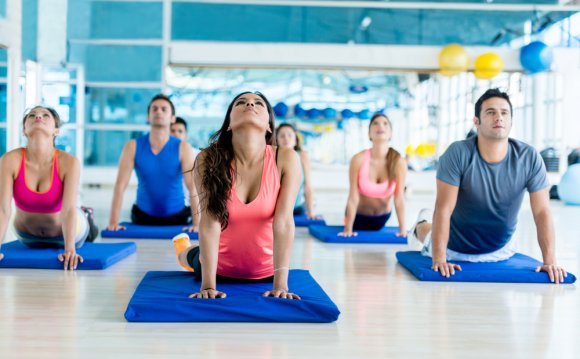
‘Prana’ refers to the universal life force and ‘ayama’ means to regulate or lengthen.
Prana is the vital energy needed by our physical and subtle layers, without which the body would perish. It is what keeps us alive.
Pranayama is the control of prana through the breath. These techniques rely on breathing through the nostrils. The ancient sages of India realized these breathing techniques. Some common pranayamas include Bhastrika, Kapalabhati, and Nadi Shodan pranayama, and you can find links to learn these below.
Practiced correctly, under the right supervision pranayama brings harmony between the body, mind and spirit, making one physically, mentally and spiritually strong.
Benefits Of Pranayamas (Breathing Exercises)
The key to healthy and happy living may lie in right breathing. When we attend to our breath, it brings us to the present moment, increases our self-awareness, and brings a sense of calm.
Pranayama goes a step further than simple awareness of the breath, using specific rhythms and techniques to bring us numerous benefits on the mental, emotional and physical levels.
- Calms the mind, reducing worries and anxieties
- Improves focus and attention, removing brain fog
- Increases energy, bringing enthusiasm and positivity
- Boosts the immune system
- Rejuvenates the body and mind
- May even slow down the aging process
Why Pranayamas Are Effective for Emotion Regulation
At a conference in Germany, Sri Sri Ravi Shankar, founder of the Art of Living Foundation, explained the connection between breath and emotions:
- “Our breath is linked to our emotions. For every emotion, there is a particular rhythm in the breath. So, while you cannot directly harness your emotions, with the help of breath you can do that.
- If you are in theater, you would know that a director asks you to breathe faster when you have to show anger. If you have to show a serene scene, director would tell you to breathe softer and slower.
- If we understand the rhythm of our breath, we are able to have a say over our mind, we can win over any negative emotions like anger, jealousy, greed, and we are able to smile more from our heart.”
One scientific study by Phillipot and colleagues (Philippot, P., G. Chapelle, and S. Blairy, Respiratory feedback in the generation of emotion. Cognition & Emotion, 2002. 16(5): p. 605-627.) showed that this mimicking of angry, sad or happy breathing patterns can in fact create the corresponding emotional states within us.
Pranayama works on this very principle. Rather than allowing our emotions to change our breathing patterns, through skillful use of the breath we can actually transform our emotional states. Given how difficult it is to control our emotions, using specific yogic breathing techniques to transform overpowering and negative emotions becomes a powerful tool for enhancing wellbeing and inner peace.
Is Your Breath Deep Or Shallow?
Take a moment now to become aware of your breath - is it deep or shallow, smooth or choppy?
We can learn the art of breathing right by observing new born babies. Have you seen their stomach gently rising and falling as they breathe in and breathe out?
Most of us breathe from the chest – such shallow breathing sends a signal to the brain that all is not well – we are stressed. Alternatively, breathing from the abdomen boosts respiration, ensures a rich supply of oxygen to the brain and signals that all is well.
Observe your breath again, now that you’ve been thinking about it for a minute - has it got any longer or smoother?
5 Yoga Breathing Techniques To Try Today
bhastrika pranayama gives a quick boost of energy and calms the mind.
While we strongly recommend learning pranayama in person under the guidance of a certified teacher, you can get a taste of them online. You can practice these breathing techniques at any time of the day, preferably with an empty stomach.
Bee Breath
Kapal Bhati
Out of all yoga breathing exercises, Kapal Bhati (Skull Shining Breath) is considered the most effective for detoxifying the body and clearing the energy channels. Additionally, it is believed to increase one’s intuition. * see contraindications
Bhastrika
Low energy levels? Three rounds of Bhastrika pranayama (Bellows Breath) quickly and powerfully increases your energy and calms the mind. * see contraindications
Ujjai
More than any technique, Ujjai (meaning Victory Breath) is a clear demonstration of the connection between our breath and emotions.
Nadi Shodan
Can't concentrate on the task at hand? Try five to nine breaths of Nadi Shodhan pranayama (Alternate Nostril Breathing) followed by a short guided meditation. Nadi Shodhan pranayama calms and centers the mind by bringing into harmony the left and right hemispheres of the brain which correlate to the logical and emotional sides of our personality.









